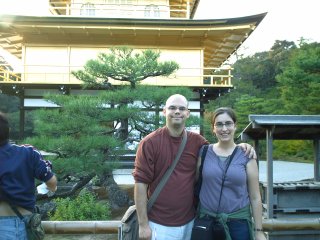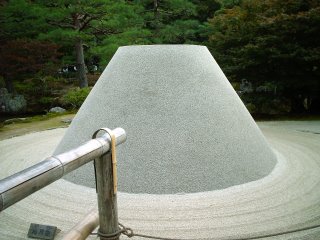I've been so busy I haven't written in weeks!
Ok, so let me summarize what's been going on. I'll segment posts into categories.
DRAGON BITES DON'T HURT
A few weeks ago Paul and I went to Kumagawa post town with our calligraphy teacher to see a festival. Kumagawa post town is a historical village that is a part of Kaminaka. It used to be an old post town between Kyoto and Obama (the town/city south of Kaminaka). It is really beautiful and quaint. We met up with our calligraphy teacher's friend, another elderly lady who spoke no English. Our calligraphy teacher speaks a few words, and I realized how much easier those few words made everything! However, both were very nice and we somehow communicated. We saw a street performance of people spinning plates on sticks and people dressing up as a dragon. The dragon "bit" everyone's head, as this is supposed to bring good health. Needness to say, the bite didn't hurt!


TAIKO
Taiko is the Japanese art of drumming. Lots of JETs and I went to see a famous taiko group, Kodo, on Friday. I thought that 2 hours of drumming could be boring, but these guys rocked the house! Think STOMP! but instead of the blue jeans they wore old-style Japanese clothes. (At one point some of them men drumbed in only a loincloth, and sometimes the female members wore kimono). Their beats were amazing. Traditional yet new and inventive. Wonderful...
The picture below is the other JETS and I at a museum near the Taiko performance. From left to right is Maren, Roisin, Rich, me, Jo, and Paul. Leanne is taking the picture.

JAPANESE ELEMENTARY SCHOOL: THE BREAKDOWN
I've been going to so many elementary schools lately... two per week. Here's yur average elementary school visit:
I make a lesson plan beforehand and have my superviser translate the important stuff into Japanese. (i.e. if I need some sort of materials or help from the teacher). I get there around eight in the morning. I usually introduce myself (in Japanese, ah!) during the teachers meeting at 8:10, since it's my first time at most of these schools (I go to about 11 schools). There is sometimes an assembly where I have to give a self intro in Japanese and English or do something more involved, like run a game.
I usually teach 3 classes per day and eat lunch with the students. The students all eat school lunch, up to high school where they bring a bento (box lunch). School lunch is not like in America, where you can choose from different options in a cafeteria. Everyone eats the same thing, most of the time in the classroom. There is usually rice, miso soup, some sort of cooked vegetable salad mush, and protein like fish or chicken. And EVERYTHING is eaten with chopsticks!
I always play at reccess with the students, and oftentimes it's an easy game I know or can figure out easily. But sometimes I will find myself in a game where I have no idea what was going on. In one such game a big S was drawn in the dirt with three circles outside of it. A can was put at the top of both sides of the S and kids would hop around on one foot and eventually try to kick the can over. Sounds simple, but there were definately rules and an entire methology to the game... heck if I know what they were doing!
Kids are usually very nice and there are usually a few students who act as my "ambassador." They take it upon themselves to say "let's play!" and let me know I should join their class at cleaning time. I can practice a lot of my Japanese with the students, as elementary school Japanese is nice and clear and simple. Sometimes kids are weird. Two little girls last week thought it was the funniest thing ever to pinch me in the but, and once some students thought it'd be fun to make fun of my Japanese.
Lesson success really varies on the students and the teachers. I've learned tricks to adapt. Sometimes the teacher understands some English and is very helpful. Other times, whether or not he or she understands any English, when she sees me struggling to communicate with the children she does not offer any help. Even though when I am there their role is more passive (I've even had teachers leave the room or not show up on time) I think it's considerate to help translate directions when needed. My biggest pet peeve is when the teacher doesn't read the Japanese version of the lesson plan translated just for them! However, I find the best solution is to expect the teacher not to help, and consider it a bonus when then do, and then it works out fine.
JAPANESE LANGUAGE STUDY
I have the greatest tutor, a friend of my superviser, who comes to my school every Wednesday after the students leave and tutors me. I am signed up to take the easiest level of the Japanese Proficiency exam in December. I'm not sure if I'll pass. There is just so much to know! But it is good motivation to study and if I don't pass I can take it again in the states. Japanese is a slow-going language to learn. Most second years I know have finally started to be able to speak after a whole year of study. It's definately much easier to learn here though. Every time I learn a new word or Kanji (chinese character) it's instantly useful.
KYOTO
Paul and I went to Kyoto again last Sunday. Here's some pics!
Paul and I in front of the Golden Temple:

The Philospher's Walk: a historical and beautiful path in Kyoto:

Part of the sand art at the Silver Temple. The mound is supposed to resemble mount Fuji, the tallest mountain in Japan:

Moss samples at the Golden temple showing what species of moss live there. How cute that it says "Very Important Moss (like VIP)"!!

Well, that's all folks. Hope you enjoyed looking at the pictures. I hope some of you read something too!
-Lisa






